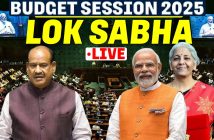Three Salutes to Indian Economy Marching Towards $ 5.0 trillion. On the eve of the 75th year of Independence, it is a matter of pride that the days of quantitative easing and tightening have not derailed India’s march towards a $ 5.0 trillion economy. The country has weathered the storm and is limping back to normalcy despite minor Corona-related incidents here and there. The IMF has projected 8.2% GDP growth for India in 2022, compared to 3.7% for the US, 4.4% for China and (-8.5%) for Russia. India will remain the world’s fastest-growing major economy.
The impact of the Ukraine War has led to an economic downslide that will slow global growth in 2022 to increase inflation. Food prices have escalated, impacting the vulnerable public across geographies. The global expansion is forecasted to slow from an estimated 6.1% in 2021 to 3.6% in 2022 and 2023. However, improved performance under exports and ever-increasing domestic demand have saved India from deceleration. The juggernaut marches ahead. With the growth at 8%, India’s GDP will scale the $ 5.0 trillion goal post by FY 2027.
Among the star performers bringing the goal post closer are Indian Banks. Almost all lenders in the private and public sectors have turned the corner with handsome profits on 31.03.2022. The NPA provisions have gone down due to solid gatekeeping on stressed assets. RBI initiatives on the restructuring of MSME loans have been a game-changer. The stock market has dis-intermediated and taken away a load of banks through boisterous responses to public issues. The situation has improved so much that perennial struggling companies like Ruchi Soya Ltd have repaid the entire debt after a successful market issue.
Despite the poor offtake of credit by the Corporate Sector, the government enterprises have kept the banks busy through enhanced borrowings. The agriculture segment, housing loans, and MSME sector have also absorbed fresh credit, improving lenders’ top and bottom lines. RBI press release rightly commended, “Notwithstanding a highly transmissible third wave driven by the Omicron variant, India is charting a different recovery course from the rest of the world. India is poised to grow at the fastest pace year-on-year among major economies, according to projections made by the International Monetary Fund (IMF). This recovery is supported by large-scale vaccination and sustained fiscal and monetary support”. Once again, banks have admirably risen to the call of duty as frontline warriors for economic recovery.
FY 2020-21 turned out to be the better in recent years for banks. The pandemic-hit banks recorded a “discernible increase” in profitability. The expenditure declined, and total income remained stable, despite a low credit offtake and interest rates—the increase in income from investments compensated for reduced interest income on loans. Revenue from trading also went up as banks booked profits on G-Sec investments. The expenditure moderated as interest on deposits and borrowing declined because of a decline in interest rates and contraction in total borrowings. The star performance is likely to be repeated this year.
The Ukraine war resulted in a re-alignment of trading partners with Europe and the Americas, shunning the Russian oil. The step proved a blessing in disguise for India as a cornered Russia offered cheaper oil to our country. India managed inflation despite fiscal pressures due to domestic demand. The partial availability of oil from Russia and Iran in the Indian rupee saved the devaluation pressure.
The public debt-to-GDP ratio remains satisfactory. The central and state government deficits have declined. According to OECD estimates, public sector borrowing needs have risen close to 8% of GDP, putting pressure on smaller companies’ borrowing costs. Implementation of fundamental financial reforms has boosted incomes and wellbeing. GST has reduced domestic trade barriers and input costs. The cuts in corporate taxes have spurred investment and productivity. Streamlining GST exemptions and reducing the number of rates have promoted tax compliance.
Real estate reform has increased transparency and governance to protect homebuyers. The Insolvency and Bankruptcy Code has reduced non-performing loans. The sizeable recoveries through the NCLT route have speeded up the reallocation of resources from low-productivity firms and sectors to more promising ones. The creation of quality jobs, under-employment and income inequality remain challenges. The employment rate has declined and is low, especially for women. A lot remains to be Donne on the labour front. Rationalisation has boosted tax collections, leaving extra cash in the government kitty for defence and development.
India has entered a self-actualisation phase and is on track to cross the coveted $ 5.0 trillion GDP in five years.
Long Live Indian Banks. Long Live Indian Republic. Happy Independence Day.
Hargovind Sachdev



